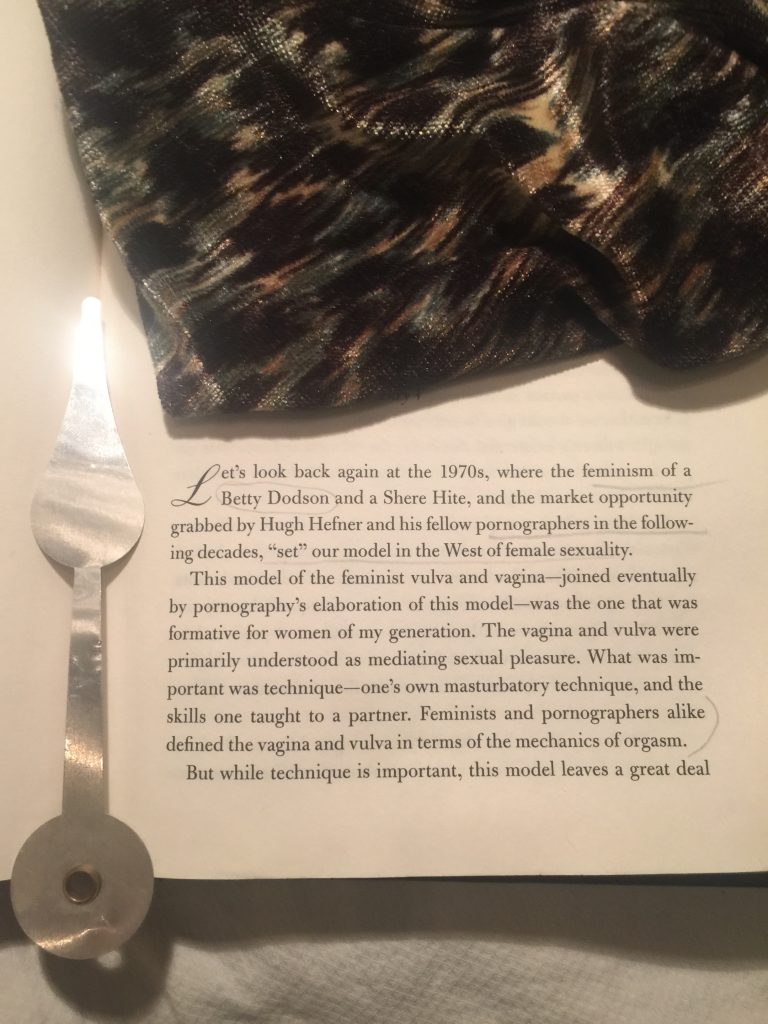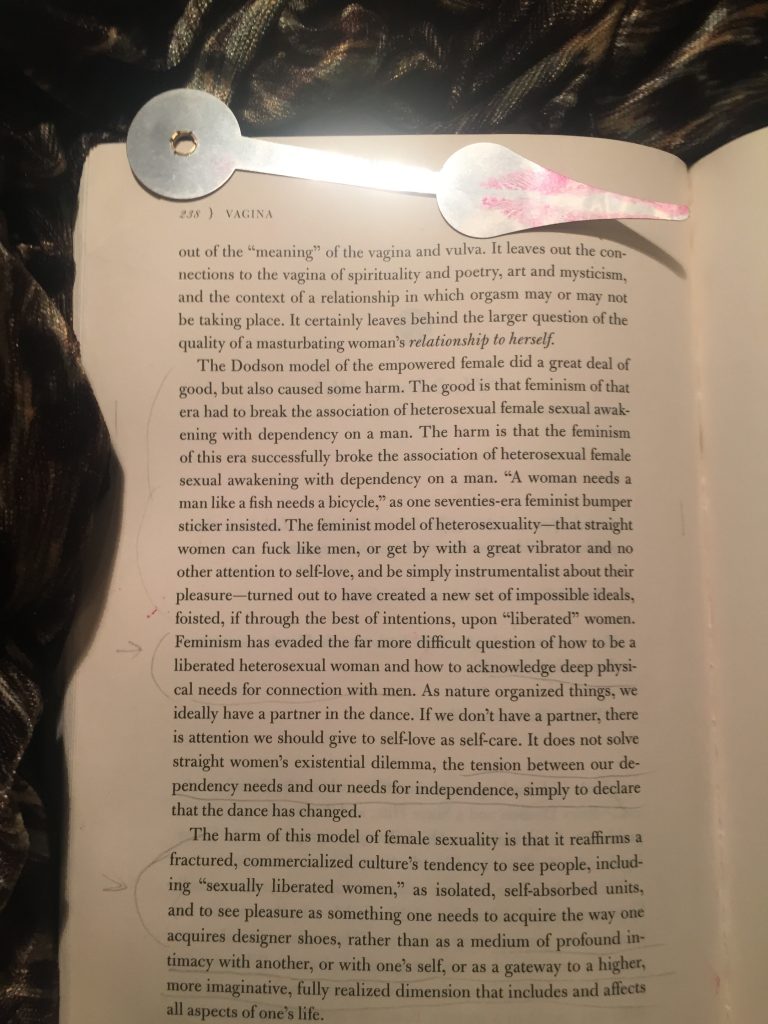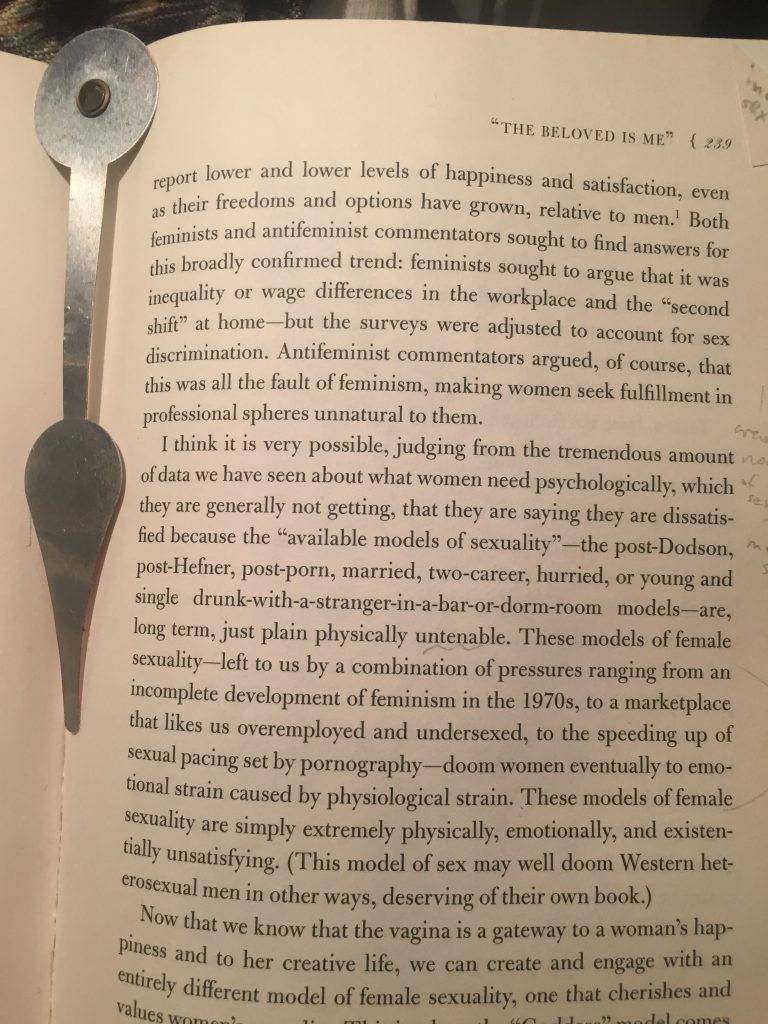Category: Research: Performative Teaching
Finding my Child as Life’s Testament?
What would your Child be if you didn’t have human kid(s)? I was high up in the air on the plane to Helsinki when I first initiated this post. It is in the aftermath of our collective workshop-ritual that I connect new knowledge with visual memoirs.
At the Helsinki’s University of Arts 23-26 February 2025 for the NSU winter symposium, I invited participants to together embody this ENQUIRY
What is your alternative Child?
《Results and dynamic memories, thank you all !》
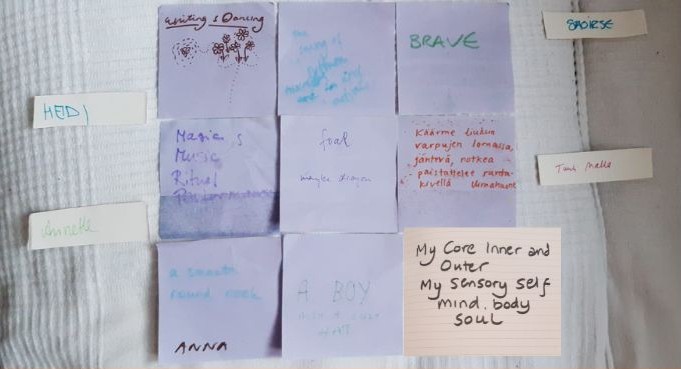
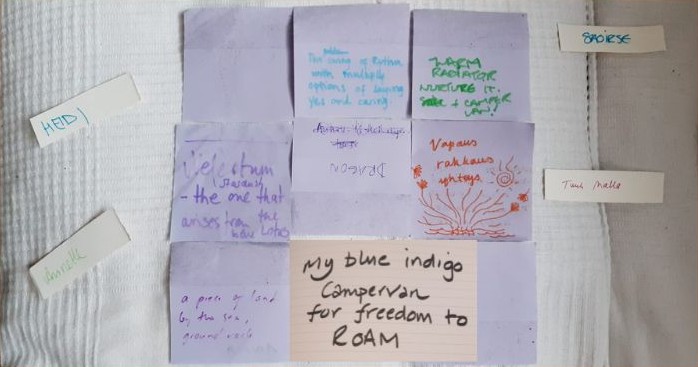
aftermath images of 《Alternative Child》



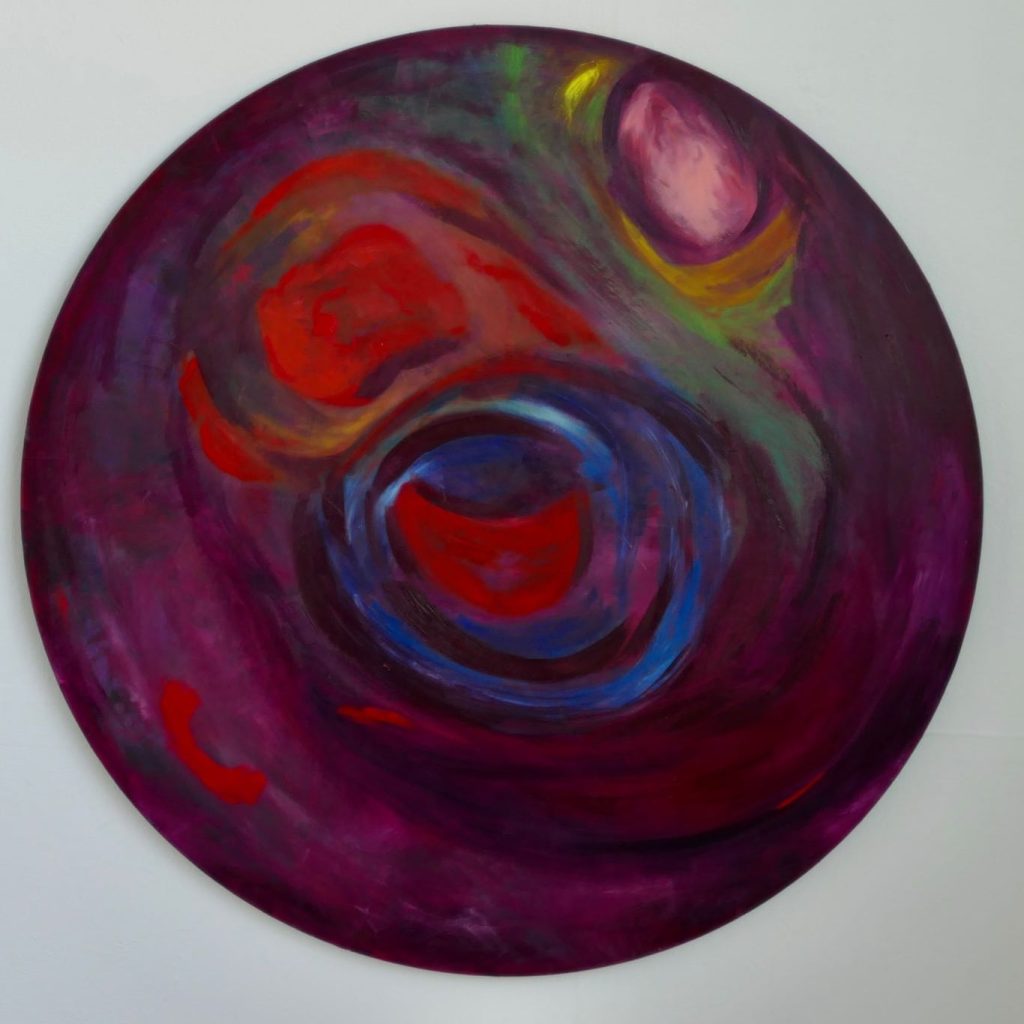
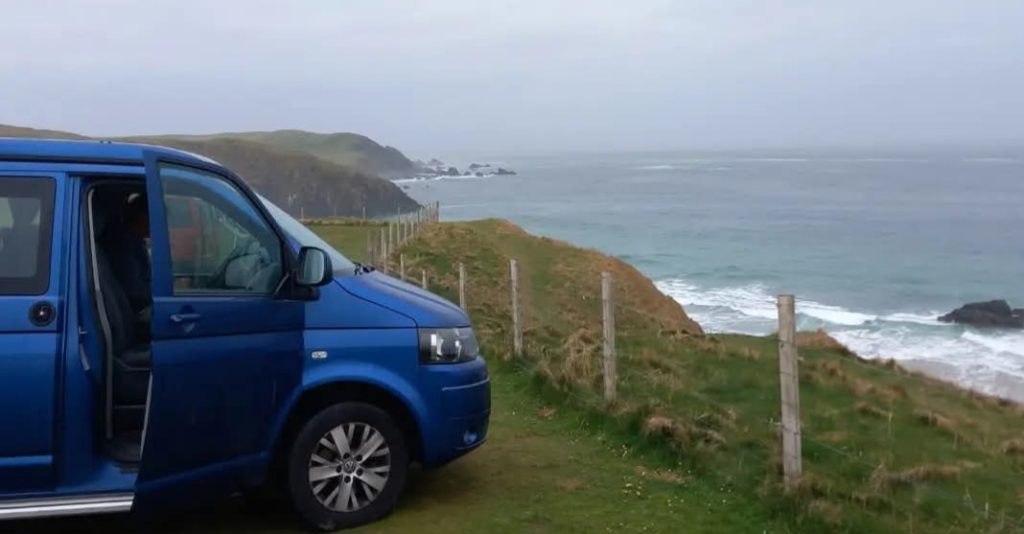







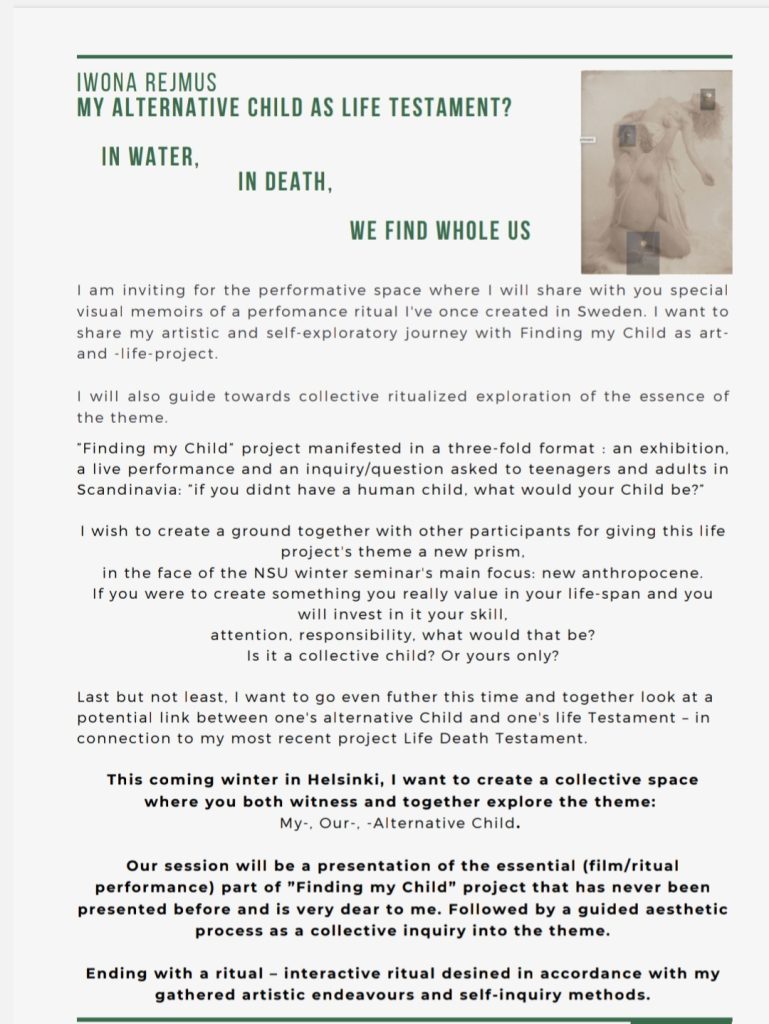
Sisters Hope’s Symbolic Testament
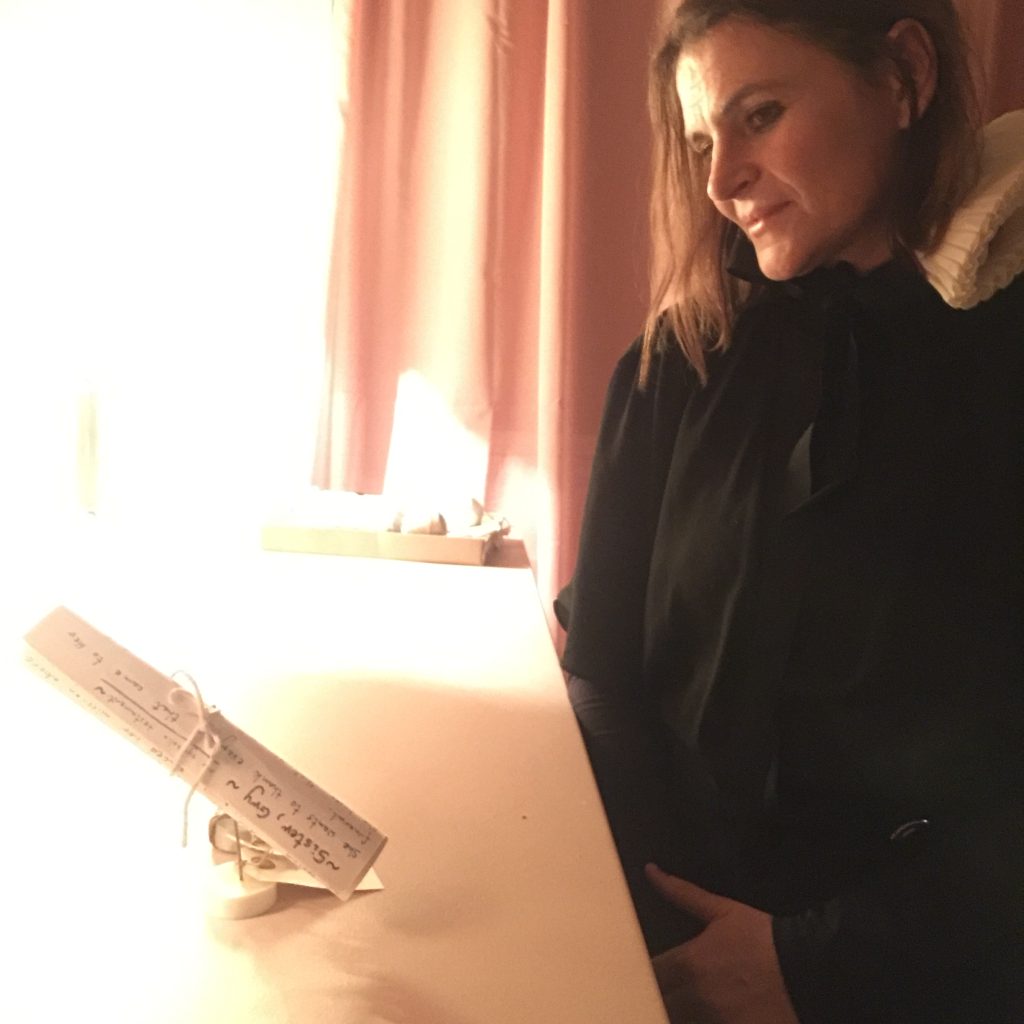
“ I want to thank everyone who came to my funeral (…)“
stop for a moment, press play, take three breaths and look around.
Come back. continue being a witness…
Her office was already dark when I stepped inside.
Dimmed lights, I mean, suede turquiose pillows, soft carpet that makes one wanna live and love.
She then lied down on this black carpet.
With my hands, I prepared her body … for transition.
I lit the candle.
Her candle and Her golden nail behind her head crown.
I covered her all, her face last.
I let her be where I was not, her Time was ticking different than mine.
After Time, I uncovered her slowly
… so she could, so alive, take a distance to herself.
She was standing there, looking at Her from that Time some whiles ago when she was lying fully covered, her candle burning.
Then she spoke.
I want to thank everyone who came to my funeral (…)
I listened, I witnessed.
Then when She finished the speech …
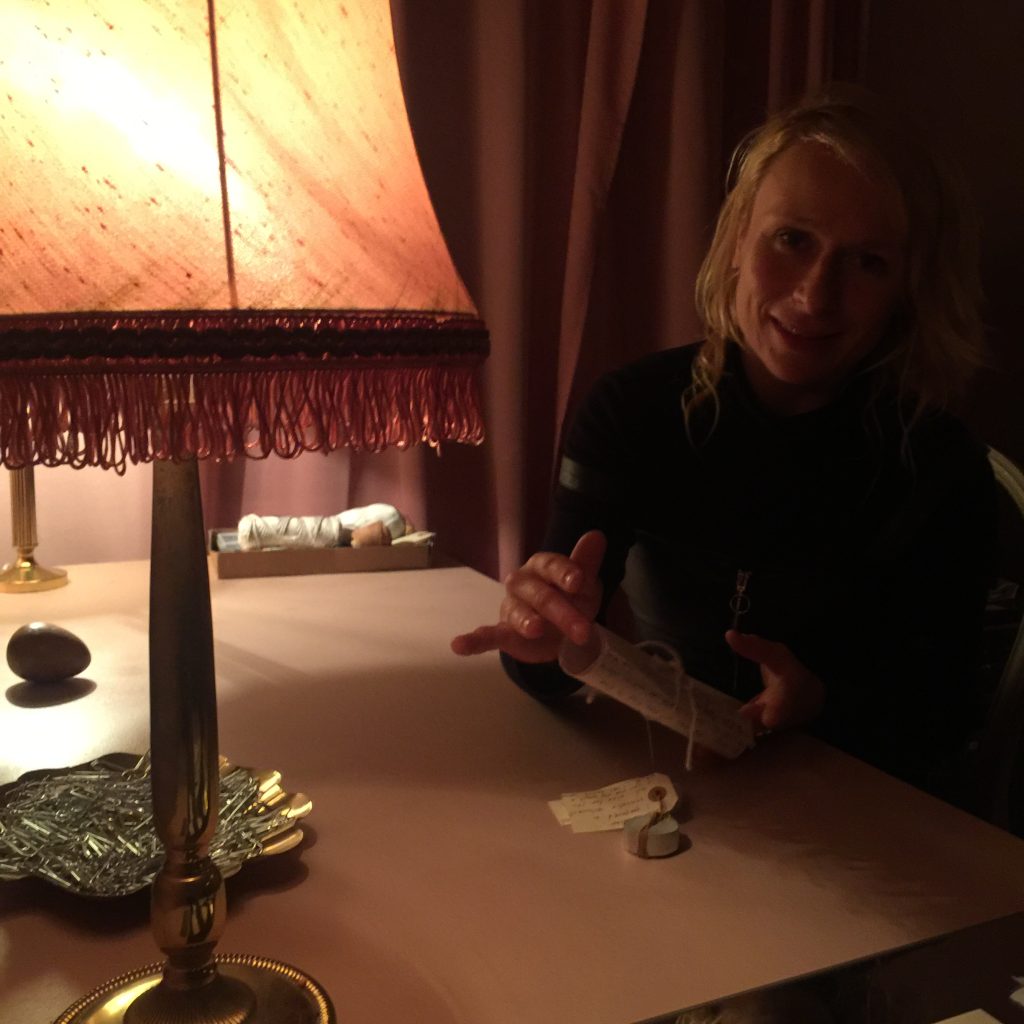
… I took three breaths and started to write what I had heard.
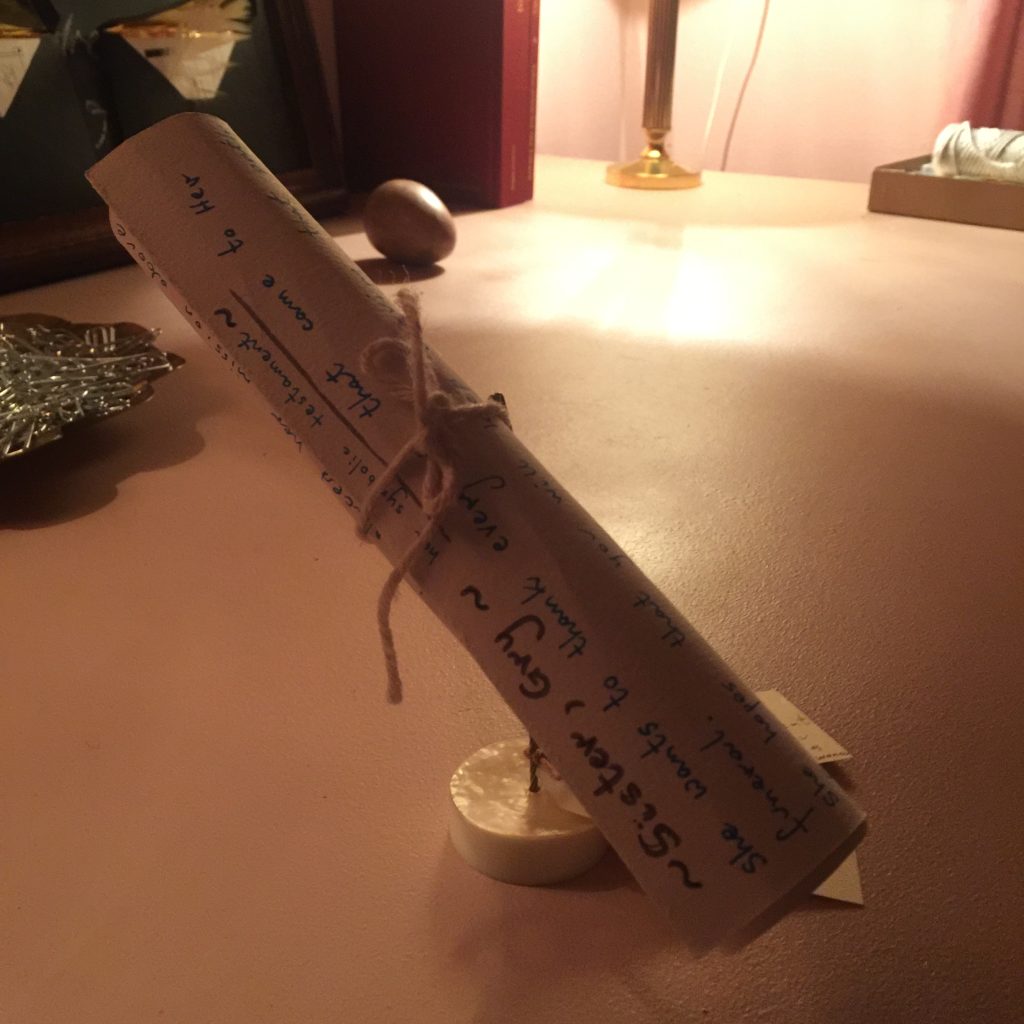
Sister’s symbolic Testament was donated to Sisters Hope Home Archive on 23 November 2021 by Iwona Rejmus
as part of her art project
Life ~ Death ~ Testament
Now.
wherever you are, stop and press play, close your eyes and then close this page
…when you feel it’s time
Trash, my treasure
Min kære ven,
jeg har samlet lidt vejledning til hvordan du sorterer i Københavns Kommunen. Det vil gøre mig og miljøet så saftigt glad hvis du starter på at sortere derhjemme/i din institution. Det hele sorterings infastruktur har længe været klar i din gård – just start co-playing with me!
Og nej, sorterede skrald bliver IKKE blandet sammen alligevel til sidst. Det er en dårlig myte der for nogle mennesker er en undskyldning for overspringshandling.
{**vær sød og tålmodig med mit dansk, jeg har ikke overskud til sprogelig perfektionisme i den sag her.
Billederne og tekst kommer fra offentlige sider}
BIOAFFALD/KOMPOST
– et nyhed der bruger og ikke brænder madrester. Hånd i hånd med ‘Stop Mad Spild’ kampagnen og så smager folke køkken endnu bedre –

PLAST (nu hård plast og ren blød plast kan blendes)

METAL (Så ren skal METAL være: ligesom PLAST)

PAP
Papir og pap må ikke blive blandet.

PAPIR

ARC {amager resource center} er en integreret del af byens kredsløb. De omdanner affald til energi, næringstoffer og nye materialer.

Jeg er lige ved at “indrette” to køkkener med affaldsorterings system. Også dit? Det er en tjeneste.
Og her* underviser jeg folk i ‘hvad går hvor?’ i den svenske context (brug de guidelines ikke i Danmark men du kan spørge mig, jeg ved meget).
Og min kjole er også “recyckled”…
*Sisters Academy, Malmo 2015
Og der er mange kreative projekter inspirerede og fødrede af TRASH:
Guldminen
Vasbygade Genbrugsstation huser Guldminen, som er et laboratorium, for udvikling af nye måder at genbruge, upcycle, reparere, redesigne og distribuere udvalgte genbrugsmaterialer.
Afleverer du dit sortere affald på Vasbygade Genbrugsstation, kan det indgå i Guldminens arbejde for direkte anvendelse og nytænkning af ressourcerne via direkte genbrug som et alternativ til en tung genanvendelses proces.
interactive frames, labels and mirrors
I want to write, talk and create interactive experiments about love and sexuality. And I have also. For many years. And do you know what makes me now write, talk and experiment more?
Finding my form of expression. The right frame to relax and unfold in. Do you recognize? Now for example I need a good song in my ears…just to stay on the track of inspiration.
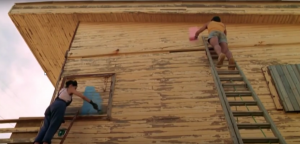 ** Gabriel Yared “Betty Blue”
** Gabriel Yared “Betty Blue”
Now retracking again from musical digressions.
So I’ve long been self-exploring and collecting others’ stories on love and sexuality. During casual talks, formal settings like conferences, workshops, or improvised – during spontaneous interviews and in art contexts.
I’ve gathered plenty of stories, most of them unshared – probably because there’s too little of the last kind of sharing: the improvised, unpolished. Just us and our friend “here and now”. I must admit that that is also what opens my body and mind the most – using time on acting and not on planning.
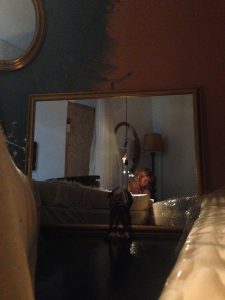
I want to write about interactive frames, labels and mirrors.
** I painted those walls blue and peach before I saw “Betty Blue”. The resemblance hit me strongly.
There were three of us in the room. Amber, Dreamcatcher and (w)Hole – in my tableaux in Sisters Academy.
She calls herself ‘asexual’.
He is very sexual and in a relationship with an ‘asexual’ woman.
Me in between and not a big fan of labels, still using them a lot… and breaking them again.
Recently for the first time I’ve met a person that identifies herself as ‘asexual’. And I realized that she could help me understand my own sexuality.
But most of all I realized that labels are tricksters that nevertheless serve us well… to both connect and disconnect from people.
So we gathered.
We shared stories and experiences.
… without a clear form or purpose, only learning by doing. There unexpected treasures surface – I know that, I’ve tried that many times, I became really good at that (but how the hell will I explain such a way of working in a job application? – forgive another digression, but I really want to work with people that understand and treasure this!).
Learning and sharing in the art context – that’s my answer. That’s also what happened this time. And that’s the foundation for this blog post: sharing different embodied perspectives to understand ourselves better through others. The topic was love and sexuality. But as any deepening process, it often turns out that it’s also about something completely different.
I’m inviting you to more feel than analyze. This is not a structured journalism. Find your personal red thread in what makes you tick.
I find it in our words and voices, that’s why I quote a lot, more than I comment.
when one is “asexual”
Me: She opened a window to a completely new (and rich!) world for me, a world different from the one I had been taking for granted – and that my interests and self-development have been – to a great extent – based on. To be gradually becoming a confident and conscious sexual being – for health, for wholeness, as a powerful form of communication. I have met people (He) that naturally are more sexually open. I have not met many that do not have such interest (She) and whose life seems so rich anyway.
She: “It’s a bit strange to live in the world where people put so much importance to sexuality, it’s a bit mysterious to me.”
We talked about relationships. And relationship to oneself.
She: “I’ve only had one relationship. I don’t really want to be in a couple with someone, cause I perfectly know that most of the people are not asexual. If someone is very sexual I don’t want to force myself just to please a person, so it’s better for a person to have an opportunity to go with other people.”
Her friends were different. She connects with people on so many deep levels. She experiences their focuses and priorities without judgement. More with a pinch of wonder.
She: “It wasn’t that I was disgusted. {Just} when I was thinking about sex, it was as if something that didn’t concern me, it was alien.”
when one that is very sexual is in a romantic relationship with an asexual person…
When He told me, I was instantly amazed, cause it was somehow breaking my conviction: that it’s mainly open and sexual people that are attractive. I was wondering how they handle such a curious constellation and what bonds them. Polyamory may sound like a cliche solution, but what really interests me is how people find creative solutions when romantic visions do not overlap with what is.
He: “It’s an open relationship, polyamorous. It’s not that easy, my partner is not asexual, but almost. She wants to be interested, she wants to be enjoying it, feeling like it, but she don’t.
It’s been like this for almost a year. She’s monogamous, but she realized this winter it might not work out if we continue like this, because I am very sexual. If I have one partner, this person cannot be asexual – it works but it’s not sustainable. So she came up with an idea that we should make an agreement that I can meet others. Even if she doesn’t like it that much, she’s willing to sacrifice that for having a relationship with me. It still works cause we have some rules around it. That is the solution we have now, but it’s not a very sustainable solution after all, cause it’s not what my partner wants. It’s a very strange situation, it’s hard.”
In confrontation with very close people that are very different, one can bring more complexities to generalized concepts… for self understanding.
She: “I get attracted physically to people, but not sexually. Physical and sexual attraction is different – I’m trying to explain to myself.”
being protective, afraid of crossing someone’s boundaries – whose responsibility is that?
She: “Even with friends that I am emotionally connected to, we are not close physically. They do it {touch} with everybody, but not with me.”
Me: I got an insight by talking to them that night. I realized that by protecting people, I potentially disempower them… or sabotage our connection.
[I share sounds, I recommend headphones on]
She: “I feel that very „touchy” people – I didn’t even tell that I am asexual – they sense there is a distance. Sometimes I regret, cause people should continue without trying to adjust themselves to me.”
Me: Having an idea about others and a desire to do good, I can be unconsciously freezing structures that are naturally dynamic. The structure of ‘asexuality’, a temporary label that serves communication – always only in the ‘now’ – needs to be broken all the time, by constantly new ‘nows’. Like that evening: the way I perceived them when they entered my tableaux was so different when I left them goodnight.
He (to Her): “Actually, I’m treating my partner like people treat you.
She is feeling she’s not giving enough, when I’m close to her, cause she doesn’t want that {sexuality} and she feels guilt. And for her not to feel guilty, we agreed that I can see others.
She’s still resenting herself because of that.”
She: “I feel pressure by desire of other people.”
Me: I’ve experienced – on my own skin and through listening to others – that guilt and pressure can be a big turn-off.
I have also experienced that when placed in a frame, where being you as a sensual/sexual being is perceived as a beautiful and valuable thing, can be a great turn-on.
how I read You, how I perceive you read Me…
She: “When a man is very friendly, I am on my guard. I need to adjust.”
Me: I have been, too. Often and for many reasons, which I continuously multiply – the more honest I dare (or am confronted) to be. And you? Why?
She: “It’s about education. We’re used to hear that guys are always ready, sexual, predators. And that girls have to be desirable. Those stereotypes didn’t affect me. But…{still}”
Me: I feel that these stereotypes affected me a lot. But I also realize that some – men, women, and they* – have experienced more than just a potential fed by stories one might heard somewhere out there.
She: “I had bad experiences with some guys, where I had to defend myself, physically, too. That’s why I’m nervous, when a man approaches me. I first sense his intentions. It’s a bit sad. If I was a guy, I’d feel insulted by those stereotypes.”
He: “I feel that curse.”
Me: I feel sad, too. And I believe many people on their life journey feel from time to time, well – cursed…, “thanks” to their various belongings.
I have been curious about today’s sexual education at schools. I have been talking to teenagers and some school teachers in Denmark and Sweden about how they feel about what and how is being “taught”, what is precious, what is missed. I’ve initiated one-to-one interviews based on exchange and created sharing circles about love and sexuality – both in the context of Sisters Academy and Human Library (Menneskebibliotekket). We talked about attraction, gender stereotypes, tantra and relationships. I wrote a bit about that in my post from last year: Between Boys and girls: random important inputs to sexual education
That evening in my room, Dreamcatcher mentioned education too, while we shared inspirations from the exploratory naked massage class at the last Sisters Academy.
He: “In Sweden we also work in {sexual} education by teaching consent. (…) It’s good cause it’ll let people be physical with others without this even leading to something sexual.”
removing „peak moments” from sexual interaction… and what happens then
Me: During classes, workshops, interviews, intimate talks throughout years, I heard and felt it repeatedly: many people – men and women – would intimately connect with others more, if they did not feel pressure/fear that an intimate gesture it will be (mis)read as an inevitable step to sexual intercourse. I have been curious to investigate it more in practice by creating safe frames for sensual interaction where that “end-goal” was not there. The focus was play and curiosity. I invited to such space also in Sisters Academy.
He: “Since the sexual massage class {facilitated by (w)Hole and Untamed}, things have turned around for me pretty much and I am really happy for it. I hadn’t understood it before, cause I always ended up in situations where everybody is having a silent agreement that sex is going to happen and there’s gonna be penetration and orgasms. It’s a total focus. So this was the first time I experienced it without any of these.
That was wonderful.”
labels, my darlings, if I don’t wanna kill you, what do I then do to you?
She: “It’s hard to be asexual in the world that is so sexual. Its very strange, its a bit oppressive sometimes.”
Me: I felt that what She needs is to explore more and find her triggers. I also felt that both word ‘ asexual’ and ‘sexual’ might be a bit exaggerated. And He mentioned it, too.
He: “Half of sexuality that exists out in the society is made-up, cause it is build on ideas that are impossible. Well, it might be possible but it’d hurt more then it’d help. A lot of it is unrealistic, we put a lot of fantasy into that.”
And She felt the workings of that label vividly in her interactions with people.
She: “I think that ‘asexual’ is a scary word, cause people take me as if I didn’t want to be touched.”
He (to She): “If there was (another) word, it would help you. A label ‘asexual’ is confusing you, even if you know exactly what you are experiencing.”
And then Me and He gave She a mission. To find a man in Sisters Academy she feels both attraction and trust for… and to ask him for a favour, for example like that: “I really want to explore my sensuality. Will you be interested in helping me getting to know myself better, in interaction, through touch, each responsible for own boundaries?
After weeks I was honoured to hear from her that she fulfilled her mission with help of a man she met in Sisters Academy. Feeling ‘asexual’ transformed again and now she would add much more depth to her sharing here.
what is your trigger, what do you really want?
Me: A very essential question came to me recently…and was directed at myself:
„If I am so interested in tantra and bdsm, why don’t I have a long-term partner/lover and a lot of sex as everyday practice? Is it because what I’m really interested in is something else?”
It seemed paradoxical to me. I needed an(other) “mirror”.
Meeting her, this „asexual” woman, unexpectedly opened a lot of new doors to a deeper understanding. The search continues, of course, but I saw clearer again why paradoxes have so often made me tick. Paradoxes are golden keys.
She: “I was interested in fetish and I was talking about that to people and people thought I was a fetishist, and for me it was so obvious that I wasn’t. It was for scientific reasons, what I was fascinated by was human psychology. Fetish is a way to understand people on a very deep level. (…)
The best part is when you think you’ve found the roots, then you realize there are still things you need to dig, it’s never ending. Introspection. (…)
Or maybe I’ll one day find that I have a fetish and then I’ll understand why I wasn’t sexual for so many years. I am young.”
Me: I’ve found something. The sexiest and most important question is:
“what is attractive? what is your trigger? Now.“
Thank you. I am continuously finding mine. And I create interactive frames that help us multiply levels of attraction through playfulness, honesty and pealing off layers.
In this, dear, let us drop these labels and play… as equal “opponents”. And as each other’s mirrors, sometimes, too.
I see you more now. I see myself thanks to you.
… to be continued.
* by ‘they’ – only in this sharing and simplified – I refer to people that identify themselves as “fluid” gender identity
Between boys and girls (random, important inputs to sexual education)
For the last years, I have been on a pearl-searching journey. Love and sexuality has been my interest since I remember. So many good and less good games played between people in their intimate relationships. Amazing developments woven together with holding back or confusion. Fear-driven and heart-driven moves. Aspirations based on dreams, philosophies or own projections about how and why others do what they do.
I must admit I’ve been a better collector than practical communicator/interpreter of my findings. So I want to share now – as an initial skeleton built on open questions and reflections that certain experiences and encounters awakened in me.
<”0oo0”>
Searching for love, while learning self-love. Exercising and showing my attractive sides, while longing to show my whole self, meet people from their vulnerable place. Wanting to be in a relationship, at the same time contemplating what/who a relationship should serve and which form it should take. Occasional thoughts about having kids, balanced with doubt, asking why, what drives me, finally trying to find an alternative child.
Meeting people with different ideas and lifestyles, getting curious, getting resistant: where is depth and where escape in monogamy, where is depth and where escape in polyamory? What do women really want? What do men really want? What do women think men want? And vice versa. Can we be together and interact in a way, so that we grow together beyond all those ‘coolness’ games? Can vulnerability be empowering and can honesty not break magic?
<”0oo0”>
“Imagine that…” or “In my perfect world…” are very important mental exercises, I believe. Expressing the most courageous dreams loudly and persistently, while working with what we have – can be a potent starting point before any ‘happiness’ talk.
Jumping in deep-water tantric environments surprisingly changed my life, teaching me something far more precious than any techniques: it namely extended my perception of love and sexuality… as a treasurous communication- and transformation- tool.
As this continuous learning process started to really blossom first in my adulthood – and I suspected it probably also did for many others – with “such a pity!” on my heart, I naturally started to act. I’ve been creating different interactive spaces and workshops, where authentic relating and sensuality are the tools.
My curiosity was also directed towards young people, so I investigated a bit, interviewed some. Where and how do they learn about love and sexuality? What is beautiful, attractive, what is fearful or confusing for them? I was also wondering what sexual education really teaches at schools…
This post is a long (inter)personal story (not scientific findings), with a great potential to awaken some further research or projects that I will gladly hear about and even get involved in.
<ooo00ooo>
The source is 4-fold:
*In spring 2016, I interviewed some teachers in a Swedish school, asking about teenagers and sexual education.
*When in early 2015 I started to serve in Menneskebiblioteket as a human book with two titles: tantra and polyamory, I talked to many adults and youth – both folkeskole and gymnasium – about those topics, life and intimate relationships. I shared my stories and asked them also about their world… and about sexual education.
*Precious insights I got from S, an artist and researcher who facilitates sexual relations groups in Malmo and contributes to further development of sexual education in Swedish schools, including queer, critical perspectives, and analyzing heteronormativity in teaching materials.
*My own life experience and other people’s experiences interpreted by me.
<ooo00ooo>
Love, sexuality and sexes: cultural(?) images, expectations and (self)perceptions
As the Swedish teacher (that taught biology and sexual education) mentioned, in Sweden, there has been a shift in what sexual education focuses on: one must not only learn to say no, but equally important is learning to say yes, listening to one’s “gut feeling”. People often misinterpret each other, so it’s useful to learn how to better read others’ signals.
So it seems that now – to a bigger extent than 30 years ago – lust and desire is a part of curriculum in gymnasia in Sweden.
The teacher mentioned what he showed and not showed to his students as pat of curriculum.
(“Never like the first time” a cartoon
and
“Do you want?” – (film/comic book? – I couldn’t find it) – he couldn’t show it cause the school curator said no 🙂
His reflection was also that teaching sexual education is nothing like any other subject, as one always has to “use” himself/herself. The ‘teacher’ role needs to always extend with something much more personal. During his studies not many fellow-teachers were up for taking this subject, as he said.
He expressed that to be a good sexual education teacher one has to be in a good contact with his/her own sexuality
(“…and I’m more of a theorist, coming from a religious family, where sex was a taboo.”). “And you have to dare to ask questions” – he added. As now it’s also a different world young people are living in, “I should have involved youth themselves in the process of designing a sexual education course last year when I came to teach in a new school”.
That were some of his lessons learned. And what I was the most curious about was:
‘What do u think is the most needed amongst teenagers?’
His answer was: small sharing circles …
{because – he said – they can easily find info about protection and diseases on the net, ungdomsugodning*, etc., but learning about emotions and communication needs to happen face-to-face}
… where young people can open up in trust and together discuss love and sexuality. And especially explore these:
–why do boys and girls do like they do?
-and what do girls and boys really think of each other?
…and topics he found out repeated themselves when he talked to his students:
<ooo00ooo>
1)Girls say that boys have to know better. Boys don’t know that Girls also have to be prepared (lubricated – also emotionally) to have sex.
(and it IS now on the curriculum)
<ooo00ooo>
2)Girls say that boys mainly want sex, but most boys are interested in making it good for girls, but maybe they are just a bit clumsy.
<ooo00ooo>
3)The teacher said that amongst 16 year-olds, maybe 50% already had sex. The interesting thing was that many young people that did not yet have sex seem to think that they are alone, that 90% of others already experienced their first time.
<ooo00ooo>
4)Those that had sex only once often said: “is that it?” – cause they had thought it will be different, better, longer…
<ooo00ooo>
5)Some say that boys gets “high status” when involved in sexual activities, and in terms of girls it’s not so well perceived. So there’s a big difference in being boy and girl when it comes to being a sexual being and expressing it openly.
<ooo00ooo>
A bit on the last point that What the Swedish teacher mentioned, what some teenage girls mentioned and what was mentioned in this video
(spil fra 03:08 min, made in collaboration with Danish ‘Sex og Samfund’, I think) all seem to point to something important.
And pointing maybe not to truth as such, but definitely to some interesting narratives in the society:
Can it be that still today being sexually active with different partners makes men “cool” and women “cheap”?
{I don’t even know how to phrase it – yes, using words is art in itself – to invite critical reflection and not to confirm stereotypes. Let’s share responsibility here, ok?}
http://www.sexfordig.dk/film/seksualitet/?id=1835&vimeo=76428070
Narratives are important, cause they have a power to drive people’s beliefs, actions…and relationships between men and women.
Between boys and girls
In Sisters Academy in Simrishamn 2016, the (w)Hole’s little tableaux filled up with teenagers + new Academy staff.
That afternoon, we created a storytelling circle: 13 teenagers and 5 adults shared their stories and questions about love, sexuality and intimacy.
I also facilitated an ‘Attraction’ workshop there.
Some things that surprised me or fascinated me (how much things developed and stayed the same when I recall my teenage world:
<ooo00ooo>
Some girls expressed that when they go dancing guys often look at them as at sexual objects so they feel pressure of feeding this canon of beauty and sexiness.
{“And girls want to be seen as ‘a whole person’? Or?” – the sexual education teacher asked when I told him that. I don’t remember what I answered. The question sounded so rhetorical to me, that I surprised myself that I hesitated… }
<ooo00ooo>
And some guys said to that: it depends on the intention of coming to a party. Sometimes I am relaxed and want to connect to people. Sometimes “I just want to fuck and kill”.
<ooo00ooo>
And then some girls said that sometimes they also have this energy of “fuck and kill”. But they also said that for boys it is much easier to appear “cool” when expressing interest in sex than it is for girls.
<ooo00ooo>
One girl told me that others at school perceive her as a non-sexual being until one night they saw her lap-dance and were surprised to see this side of her. It seems that people create stereotypes about each other and others’ sexual abilities.
It seemed to me that both sides are tired of playing this confusing game that they actually don’t like to play.
Masculine and Feminine in a woman, Masculine and Feminine in a man…
Recently I repeatedly talked to people – also, but not only, from queer environments – that seemed triggered by operating with notions ‘feminine’ and ‘masculine’. For me they are just words abstractly representing certain qualities without coloring them with judgement. Like purple and yellow. Like air or earth element. Now I see that the problem might be that in people’s minds ‘feminine’ is linked to women and ‘masculine’ to men. No doubt that queer people often hate all this tantric “polarity” talk 🙂
But The New Tantra is very queer in a way. Polarity is sexy, but reverse polarity is as sexy. Women expressing their “masculine” sides and men playing with “feminine” sides – all to grow even more powerful as human beings. Men being together with men, women with women, if it feels right, sexual identities being very fluid in this sense.
I still use those concepts (masculine, feminine), I like using them, but sometimes I consider finding new words – just to avoid unnecessary, long explanations.
I am interested in sexuality/sensuality as communication – a practice potentially much broader than what happens isolated between romantic partners/lovers.
Gender Identity and Feminism(s)
My experience was that topics like gender identity, transsexualism and feminism were hot subjects amongst the youth in Swedish gymnasium. It stroke me also how determined some female teenagers talk about feminism. That made me initially think two things: 1. there must me plenty of different schools of feminism, they keep multiplying and there’s so little I know about this complexity 2. those girls seemed to have an uncompromising belief in the importance of this “fight for female rights” and strong idea about commonly repeated issues like even salaries, equal access to various resources, right to abortion, etc. Then I started to ask about definitions, weaving in various “why’s?”.
My spontaneous concern was also: “poor men amongst those strong women equipped with unquestionable historical arguments and often with better abilities to express their emotions and opinions. Who is fighting for your rights, men?”.
I’ve been also wondering how men and women can cooperate, so that they become stronger together. What would be their common fight?
And am I a feminist myself? And if yes, what is MY feminism?
When I was young, I called myself a feminist – as every intelligent, aware, modern girl should – I thought 🙂
From the today’s perspective, that movement and belief system was built very much on opposition. Us against them. Who’s winning the battle, baby?
Porn can be destructive for learning real intimacy and deep sexuality – I’ve often heard.
But certain schools of feminism (“I have my clit and don’t need a man”) can no less than that contribute to unnecessary separation between men and women.
One book during the Academy started as a single-use reference to a question, and ended up as a recurring foundation for many existential debates, its fragments being read in various corners, its pages were flipped through by many curious hands. “Vagina” by Naomi Wolf the book was… I want to share some quotes.
(quotes from “Vagina“).
It took me years of search and trial and confusion to come a bit closer to understanding where the real women’s power lies. In my world, of course, let me share about MY PERSONAL FEMINISM…
Since tantra entered into my life some years ago, standing in opposition to men was suddenly not longer necessary and not at all in my interest. On the contrary. I have actually never found so much woman-power in me as when being close to men. What an amazing shift, a relief! So yes, I am a feminist and I like male feminists, too, I just need to find my own definition and manifestation of feminism.
“Nuancing” dynamic realities, questioning hard-to-question slogans. Setting free last-described “structures” by creating new narratives.
Embrace complexity, baby!
If you want to read more on love, relationships and sexuality, with new angles, new real stories, 1.5 years later, you’re welcome to land on my post about Labels, Self-Perceptions and (A)Sexuality
<***> know that this sharing is about questions, not answers and is an expression of my own curiosity and a potential debate-starter. It doesn’t present any statistic-based study, but pieces of a complex picture – all gathered, while talking to different people.
The Art of…TEACHING. Where and how to push this New Education {Lesson 2}
I am so lucky. Since late winter developing and constantly (re)shaping my poetic self as a staff member of Sisters Academy* that will open for students and researching teachers in 2015 in Malmo and late summer 2017 in Copenhagen. I can use art – an interactive performance universe – as a method and an entry point for research on alternative approaches to education. I can, through being a performer, explore what it feels and means to be a teacher and an activist (here is blog written by me as Academy staff). I can keep designing my life journey in a more creative and holistic way. That’s why I am lucky. And I want to share it. I am reeducating myself, filling important gaps school didn’t find important to teach. So I have to do that myself.
My adult life journey as a second education. Together with others. Through interaction. Cause we all have to fill our own gaps. For example what is value in and ways for real Intimacy. Sexuality. Responsibility… for yourself and others. Cooperation. Conscious leadership. Authentic Communication. Life. I am so curious what your second education would be. What holes to fill for you to make you into a more whole being.
I have some ideas. And even more questions. Let’s start here, it’s good.
If it’s true that the majority of educational models is based on old paradigms, let’s build awareness around it and experiment with new models. But without criticizing and pointing fingers – this is not a constructive activism. Let’s instead acknowledge that this (still used) old model was probably built on expertise, innovative ideas and best intentions to fit current needs. Back then.
But wow it’s time to redefine and transform. Cause – as Ken Robinson explains in the film – this mindset of ‘degree-leads-to-job’ is not valid anymore. And there’s a growing common belief amongst pupils that school distracts them from what is really important or interesting for them in life, instead of supporting and enhancing it. We maybe feel that in present times there’s a need for different skills and values. Cause we have long moved forward from intellectual culture of the Enlightenment and economic situation of the Industrial Revolution. Human value and social class is still judged according to a specific view of the mind: academic (smart) vs. non-academic (not so smart). The film mentions ADHD as a modern fictitious epidemic, and an unfortunately common practice of curing it is hurting brilliant or potentially brilliant people…by numbing them to make them more focused at school.
Deadening also pupils’ ability for untamed aesthetic experience – experience often provided by art.** – where “senses are operating at their peak; where one is being present in a current moment; one is fully alive(…)”.
I agree that schools’ real mission is awakening pupils to their full potential, instead of ‘shhh’-ing them when distracted or “too” energetic.
I also agree that best learning happens in groups, so atomizing*** people is artificial and failing to give any real evaluation, Therefore more sensuous education for me means one that supports wholeness …of being, of experiencing. The sensuous is what Sisters Academy will manifest and research on.
>>>>>><<<<<<<<>>>>>>>><<<<<<<<>>>>>>>><<<<<<<<>>>>>>>><<<<<>>>>>>
Here is another take on the future of education and I feel inspired to quote below the author’s points (****) as many overlap with my own approach to workshops I myself design …
INNER-PRENEURSHIP
EDUCATION TO UNLEASH HUMAN POTENTIAL
Personal development and individual growth will become the cornerstone of any educational program.
GLOCAL AGENTS
CONTRIBUTING TO OUR GLOBAL VILLAGE
(…) the ability to think and act systemically and understand the interdependence of our global village,
VISUAL THINKING
EXPERIENCING LEARNING IN NEW WAYS
Cognition and our capacity to understand new ideas and concepts will become a highly sensitory and engaging experience. We no longer need just to “think” about an idea.
FUTURE THINKING
USING THE FUTURE AS A SOURCE OF INSPIRATION FOR THE PRESENT
Unpredictability will make future thinking an increasingly relevant skill (…) Being able to imagine, envision and forecast future landscapes
SOCIAL LEARNING
THE POWER OF THE COLLECTIVE LEARNING EXPERIENCE
Information is accessible as ever before. (…) learning is becoming by essence a highly social and collective experience. Education will play an influential role in helping us learn how to communicate better and use the power of language to establish dialogue with others in a generative manner.
CONNECTIONS OVER MEMORY
LEARNING HOW TO LEARN
More than requiring us to memorize and retain data, education will be responsible for helping us master the art of learning how to learn. In a world where everything we need to know is just out there, the (new) ability is to make connections between bits of data and consciously explore and navigate complex waves of information.
BETTER FASTER DECISION MAKING
CURATING DATA THAT DRIVES BETTER CHOICES
Being capable of rapidly curate and synthesize information and transform it into applied knowledge (…) New digital tools and mental processes will help us filter and distinguish relevant content from just noise.
ONGOING LEARNING
EDUCATION AS A CONTINUOUS PRACTISE THROUGHOUT OUR LIVES
Just like health, wellness or spirituality, education will be a continuous journey throughout our entire lives. The capacity to design and implement long term sustainable learning experiences will be a relevant competence.
LEARNING FOR ELDERS
PROVIDING AND SUPPORTING HIGH QUALITY LEARNING AFTER RETIREMENT
What it means to age and what you do with your late life will change. Elders will be eager and hungry to learn new things and gain new perspectives
VIRTUAL LEARNING EXPERIENCE
A NEW LONG DISTANCE LEARNING LANDSCAPE Advancements within the virtual reality wave (…) a new long-distance educational landscape to emerge, allowing us to provide and receive content in a highly engaging and participatory way.
CLOSE TO NATURE
THE CLASSROOM OF THE FUTURE IS JUST OUT THERE
Being close to nature helps us, human beings, be more relaxed, focused (…) The closer we get to our screens, the closer we need to get back to the natural environment.
PLAYFULNESS
HAVING FUN IS SERIOUS BUSINESS
Our bodies will be the platform where effective learning takes place
EQUALITY WARRIORS
CREATING A MORE JUST AND FLOURISHING WORLD
Our planet is becoming increasingly divided as it is interconnected. Education will need to rethink its purpose and see itself as the answer to the creation of a more just and fair world. Educational institutions will have the responsibility to take a stand for their values, and the obligation to prepare, educate and train change makers
RADICAL INCLUSION
FINALLY, EDUCATION AS AN EFFECTIVE HUMAN RIGHT
making education more accessible to large population groups that only a few decades ago were impoverished and abandoned. Education is one of the most powerful instruments for reducing poverty and inequality.
CO EXISTANCE
LIVING, CREATING AND THRIVING, TOGETHER
Our world is becoming increasingly diverse (…) Learning how to to collaborate and thrive together will be a determinant factor for success in organizations, communities and societies. Education will play a relevant role in helping new generations be more empathetic, tolerant , caring and appreciative of diversity and difference, and understand it as an asset for progress and development.
Very interesting visions! I see it as a contemporary reflection on new values and education’s important role to emphasize them: inclusion; engagement; sustainable, life-long learning; “breeding” responsible change-makers, nature; virtual learning; playfulness, more… I am happy for seeing such a transformative direction. I also want to contribute to push it forward. And I know many that want the same. And they do. We do. And it’s contagious 🙂
It is, though, important, I feel, to start from the beginning. And at the beginning are the above mentioned values, not methods or content. One can teach playfulness, effective communication skills, virtual technology or tantra, but it is values that make us use those skills in a specific way. And such awareness, values and real motivations for our actions are my point “0”. Old paradigms, myths, separation, limitations to personal expression, unhealthy competition mindset and ego patterns can only transform if we first start educating with values – not techniques – as an entry point.
I keep changing my mind and seeing more angles to it. And I will keep you updated.
** I want to by the way extend this palette of sources for aesthetic experience to include for example mindfulness, games, tantra, but not in this article.
*** …well, atomizing anything is artificial – I believe – it’s my own take on quantum mechanics (going beyond fragmentation). A reflection not for this article, though.
The Art of…LEADERSHIP : becoming a teacher again. initial steps. initial thoughts. {Lesson 1}
The process of developing classes is like (re)creating myself. A ritual and research that already started when I said yes to the project. Here are some initial thoughts on the journey with Sisters Academy*.
I am interested in dedicated, extended processes in a group, like long-term relationships, like Club de la Faye’s ‘Rituel du Papillon’ project, like Pina Bausch worked with her family of dancers, like Frank recording an album. Where the unique inner culture is shaped, where unwritten law is clear to everyone that everyone feels responsibility to hop into a leader’s role when needed; where everyone understands that we all have to get a little bit wilder…and a little bit honest, de-sweetening our relationships.
I want to put myself occasionally in a vulnerable position to grow together with my students. I want to occasionally become their pupil. I want to empower them and let go, wishing they will become better than me.
My intention is to be contagious with what I have to offer. And what inspires others depends mostly on them. And I want them to understand that. Understand that it takes two to tango. That we should always take active part, even as receivers, followers, audience. And remember that it’s everyone’s job to share their treasures with the world without hiding behind ‘un-readiness’, behind “not an expert”, or “who am I to teach you anything”. Stay humble, but be powerful. And use it for something good.
There’s tens of ways of serving. Sometimes we have to just shut up and listen, sometimes we need to question and shake somebody back to the right track, sometimes we need to play, touch or seduce someone, because (s)he needs to get into the body. Sometimes harsh feedback. Sometimes unconditional love.
I want students to reflect not only by answering, but by asking others good questions, really seeing each other. To faster get under the surface.
I feel I need to stay aware that I might impose on students my way of perception, expression, interaction, evaluation.
‘Sensous’ for me means integral. A healthy balance to one-sidedness of rational education, where the Head rules and deprives of juice.
I am inspired to work with different energies in connecting to space and each other.
Prioritizing variety also accidentally helped me solve the dilemma: “should I teach what I am already good at OR should I design and try out something new again?” And now I know: I need to bring both to play, 2 different classes, 2 different focuses. And one joker. Like my name is still a joker. And my alternative child that has been conceived, but when it comes to the world and in which form is yet unknown. At this stage of the process, I will call myself “the (w)Hole”.
The (w)Hole, slowly finding her child…
* you can still enroll as a student or a researching teacher at the Academy 30 August – 20 September 2015 in Malmo, Sweden. Stay from 24 hours up till 3 weeks: http://booking.sistersacademymalmo.se

